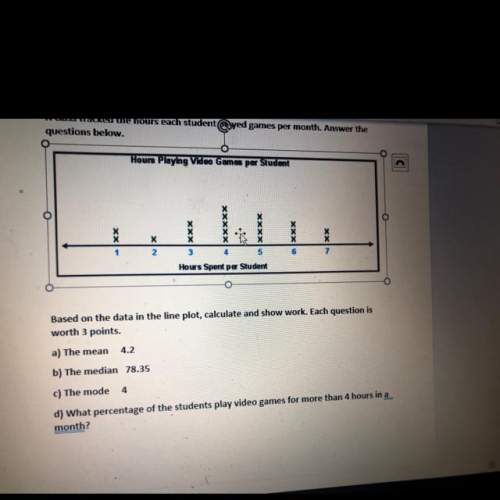
Mathematics, 26.10.2020 16:40 rleiphart1
Let I=∫∫D(x2−y2)dxdy, where D={(x, y):3≤xy≤4,0≤x−y≤2,x≥0,y≥0} Show that the mapping u=xy, v=x−y maps D to the rectangle R=[3,4]×[0,2]. (a) Compute ∂(x, y)/∂(u, v) by first computing ∂(u, v)/∂(x, y). (b) Use the Change of Variables Formula to show that I is equal to the integral of f(u, v)=v over R and evaluate. (a)∂(x, y)∂(u, v)= (b)I=

Answers: 1


Another question on Mathematics

Mathematics, 21.06.2019 13:30
49xy +34y - 72z. determine the degree of the polynomial
Answers: 1

Mathematics, 21.06.2019 15:10
12x + 1 = 25 solve the following equation. then place the correct number in the box provided.
Answers: 2

Mathematics, 21.06.2019 18:00
Carmen begins her next painting on a rectangular canvas that is 82.7 cm long and has a area of 8,137.68 cm2. will the painting fit in a frame with an opening that is 82.7 cm long and 95 cm wide? explain
Answers: 3

Mathematics, 21.06.2019 18:00
Write the equation for the parabola that has x− intercepts (−2,0) and (4,0) and y− intercept (0,4).
Answers: 1
You know the right answer?
Let I=∫∫D(x2−y2)dxdy, where D={(x, y):3≤xy≤4,0≤x−y≤2,x≥0,y≥0} Show that the mapping u=xy, v=x−y maps...
Questions



Mathematics, 08.10.2019 16:30



History, 08.10.2019 16:30


Mathematics, 08.10.2019 16:30


History, 08.10.2019 16:30

Biology, 08.10.2019 16:30

Arts, 08.10.2019 16:30




Mathematics, 08.10.2019 16:30

Arts, 08.10.2019 16:30

History, 08.10.2019 16:30





